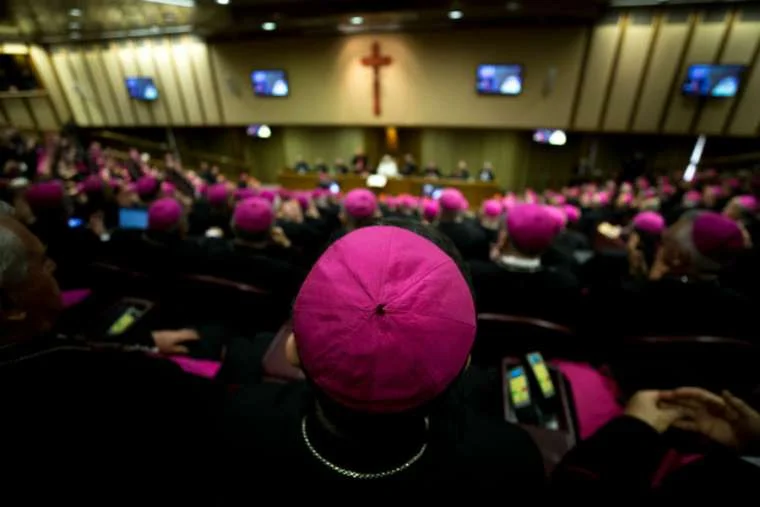This approach to faith formation is flexible but it definitely requires buy-in. No good faith formation ever takes place without the commitment and personal investment of a team of leaders. The leaders for this approach to faith formation are, primarily, parents and mentors, godparents and sponsors. This is not at all meant to replace the parish – to the contrary, this empowers the parish to do what the parish is meant to do: empower the faithful to take responsibility for the mission of evangelization.
Power and Wisdom: The Genius of the Catholic Whole
A Better Way to Form People for the Sacraments
I think that, for the most part, we in the Church have become too dependent on textbooks and third-party programs to run religious education in Catholic schools and parishes alike. This is not the Christian way of formation because the most important resource for those who are being formed for discipleship is, actually, you.
Why Are There Two Editions of 'Turn to the Lord'?
What I'm Working On at the Turn of the Year
What I'm Working On to Close Out 2020
My Articles Related to the Coronavirus
Advent with Oscar Romero
Biographies of saints that get it right, Part 4 of 4
You cannot tell the story of a saint without telling the story of God’s love for his people. The saint is where the love of Christ is made manifest in a particular way, in a particular time, for particular communities and people. Saints never stand alone: Christ is with them, and they bring Christ to others.
In this fourth and final installment of this series on biographies of the saints, we examine two works: “Oscar Romero and the Communion of Saints” (Orbis Books, $24) by Scott Wright with Octavio Duran, and “Bakhita: From Slave to Saint” (Ignatius Press, $16.95) by Roberto Italo Zanini — both testify to the presence of communion in the life of every saint.
Biographies of saints that get it right, Part 3 of 4
The lives of the saints are never mere biographies, because their real lives are hidden in Christ with God (cf. Col 3:3). To see these men and women as a saint means learning to see Christ’s beauty in their particular life. Perhaps no one is better suited to see a saint for who he or she really is than other saints. Some of these men and women even write about other their fellow members of the Church triumphant as a testament to Christ’s glory made present to and effective in the lives of those who have learned to love them.
In this third installment in a series on biographies of the saints, we examine two works about saints — one written by a saint himself (St. Bonaventure on St. Francis), and another written by one whose cause for canonization has begun (Dorothy Day on St. Thérèse of Lisieux).
Biographies of saints that get it right, Part 2 of 4
It is difficult to write about the saints. Their biographers face the twin dangers of reducing their subjects to a mere biography or of sapping their subjects in pious drivel. When biographers get it right, though, the saints come alive to inspire and challenge those who meet them in and through these biographies.
In this second installment in a series on saint biographies, we look to two modern works about two medieval reformers: “Catherine of Siena” by Sigrid Undset and “St. Philip Neri: I Prefer Heaven” by Giacomo Campiotti (director) and Mario Ruggeri (screenwriter).
Biographies of saints that get it right, Part 1 of 4
Writing about saints is a strangely perilous affair. It is much easier to get a saint wrong than to get a saint right. On the one side, there is the danger of reducing a saint to mere biography drained of theological and spiritual depth, while on the other there is the danger of undisciplined pious paraphrasing. But when the biography of a saint goes right, the personality and distinctive holiness of the saint is made vividly, refreshingly present in the minds and hearts of readers.
As the first installment in a series on such biographies, these two books present beloved saints with clarity, depth and spiritual richness: “A Man for Others: Maximilian Kolbe” by Patricia Treece and “Something Beautiful for God” by Malcolm Muggeridge.
Resource for Adults to Form Young People in Faith
The task of building Catholic communities at schools and parishes
Long After the Prodigal Son's Return
Naughty and Nice Lists for Preaching on Trinity Sunday
I teach a course on “The Trinity and Christian Salvation” to masters students at Notre Dame. My students include lay ministers, seminarians, deacons, teachers, and inquiring adult and young adult Catholics of all kinds. After we have progressed through our studies a bit, I bring up the issue of preaching on “Trinity Sunday”. The immediately get it––they have all experienced mostly bad homilies on this day above all days. I give them a chance then to come up with a “Naughty List” (things to avoid on Trinity Sunday) and a “Nice List” (what to include or focus on when preaching on Trinity Sunday). Here are some of the most common responses…
A Pilgrimage of Sacred Art
Priests: Formed as Men of Communion
Saints Should Disturb Us
I read something about St. Catherine of Siena last night that has completely torn apart my existence and forced a sharp examine of conscience. Why? Because the saints--when we really, really dare to see them--are not there first of all to comfort us. They should first disturb us. They work in Christ, who wounds us in order to heal us.










